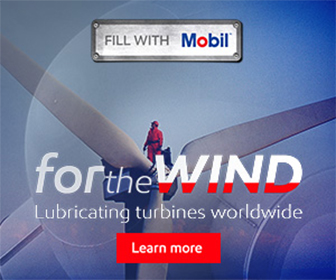GCube Scrutinizes Blade Breakages: Specialist renewable energy insurer analyses causes & frequency of wind turbine blade failure in new report
Specialist renewable energy underwriter GCube Underwriting Ltd has authored a detailed report to examine the problem of blade failure and breakage throughout the wind industry.
Entitled "Breaking Blades: Global Trends in Wind Turbine Downtime Events," the report draws on a combination of GCube’s extensive proprietary claims database and publicly available market news to identify the root causes of common types of blade failure and suggests proactive mitigation measures to counter this inherent risk to wind energy assets and investment.
As wind power continues a high-profile migration from traditional growth markets to newer, often highly remote locations in Asia Pacific, Africa and Latin America and turbine manufacturers find themselves under increasing pressure to deliver cost competitive electricity generation through larger turbines with minimum unscheduled downtime and longer, lighter rotor blades, the overall integrity of wind turbines and, specifically, the performance and reliability of their blades, appears to have suffered.
With an estimated 700,000 blades in operation globally, there are, on average, 3,800 incidents of blade failure each year. While the frequency of such incidents and their severity varies significantly from country to country, blade incidents can cost in the order of $1 million to resolve and there is a clear industry imperative to ensure that these failures are kept to a minimum.
In the Breaking Blades report, GCube categorises the common causes of blade failure, ranging from lightning damage to human error and manufacturing defect, before explaining the factors influencing the cost of blade claims. The report then goes on to look in detail at the individual components of a standard blade and outlines a range of inspection criteria that should help to mitigate the risk of blade failure and loss.
This advice is followed by in-depth interviews with representatives from key industry stakeholders RES, IM FutuRe and Renewable Energy Loss Adjusters (RELA), highlighting the most frequent origins of blade damage and its wider effects on industry investment.
The launch of the report marks the first time that an insurer has shared this level of data with its client base in the renewables sector. Breaking Blades forms part of a wider knowledge sharing initiative as the first of four reports on wind turbine failure to be released by GCube between September this year and June 2015.
“As the wind industry looks to attract secondary investment from the pension and fund management communities, blade failure and the associated business interruption costs - exacerbated by the shift into emerging markets and growing pressure on manufacturers - can be an unwelcome deterrent,” said Jatin Sharma, Business Development Leader, GCube.
“Ultimately it’s in the interests of all parties to minimise unscheduled downtime and the frequency and severity of turbine failure. The Breaking Blades report is by no means an answer to the problem, but should serve to raise further questions and create opportunities for greater industry-wide collaboration.”
To request a copy of Breaking Blades: Global Trends in Wind Turbine Downtime Events, please email [email protected].
GCube
www.gcube-insurance.com









